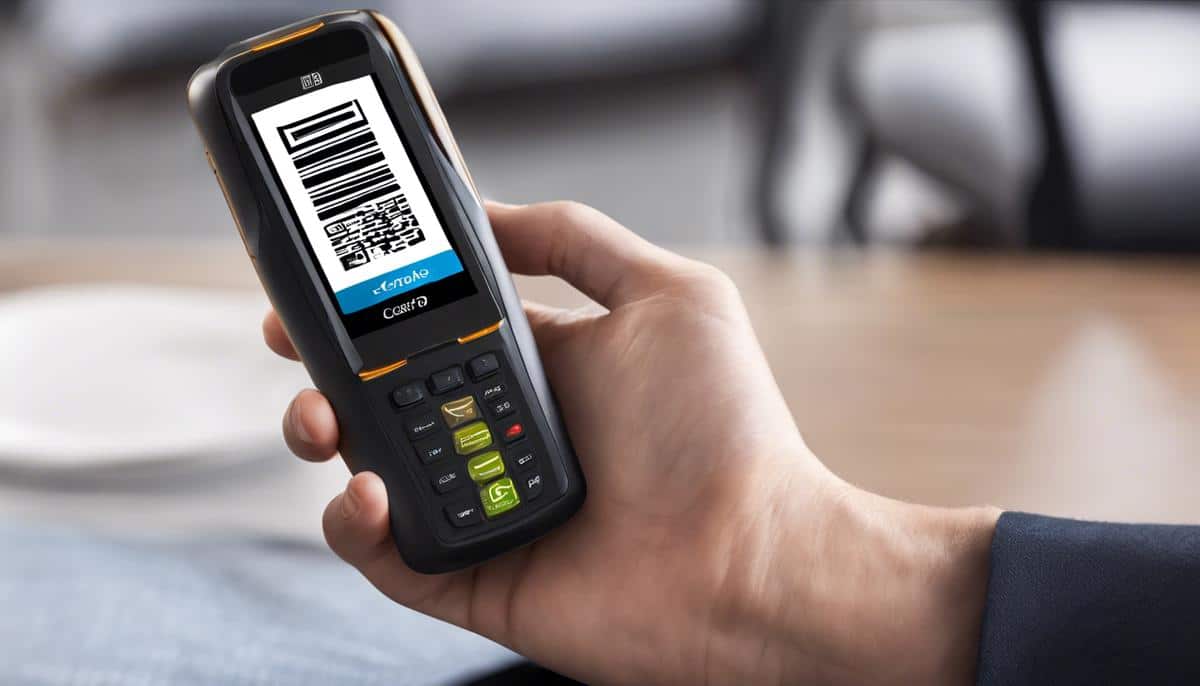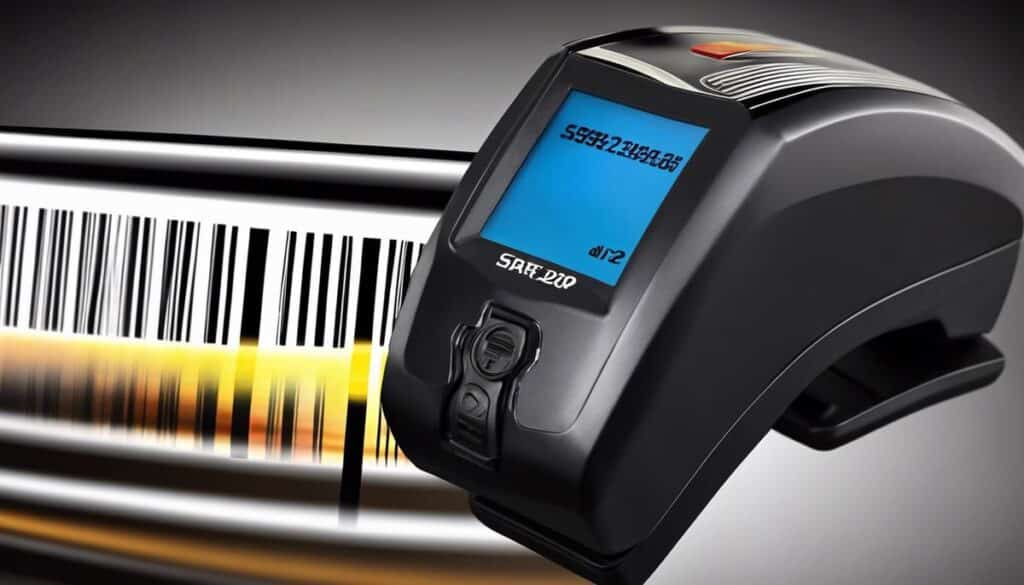In the digitized world, we inhabit, barcodes serve as the silent sentinels of commerce and data management, bridging the physical and digital realms with simple patterns that hold a wealth of information. Unraveling the mystery of these intricate symbols, this discussion ventures into the heart of barcode technology.
Barcode Scanner App
It illuminates the encoded versatility found in various forms like UPCs and QR codes and demystifies the technological wizardry that allows barcode scanners to translate these patterns into readable data. As barcode technology becomes further intertwined with the fabric of our daily lives, understanding its fundamentals is not merely academic, it’s a practical skill for the modern world.
Simultaneously, this narrative serves as a beacon for those venturing into the realm of mobile app development, shining a light on the fundamental building blocks necessary to breathe life into applications, specifically those harnessing the power of barcode scanning. From choosing the appropriate development environment to incorporating sophisticated barcode scanning libraries, this exploration is your compass in navigating the complex yet rewarding odyssey of creating a barcode reader scanner app.
Understanding Barcode Technology
Decoding the Barcode: A Tech Enthusiast’s Guide to This Ubiquitous Technology
In the galaxies of technology that organize our world, barcodes are like the unsung celestial bodies. Small, pervasive, yet immensely powerful, barcodes have streamlined the way we track, manage, and sell products. Ever wondered how these striped marvels function? Let’s dive straight into the binary underpinnings of barcodes and demystify their operational secrets.
At their core, barcodes are optical, machine-readable representations of data. The magic of a barcode lies in its ability to convert numbers and letters into a pattern that can be rapidly deciphered by a scanner – chiefly using one of two symbologies: linear or two-dimensional (2D).
Linear barcodes, or one-dimensional (1D) barcodes, are the type you’ll often find on grocery items. They consist of a series of parallel lines of varied widths and spacings which represent a numerical sequence. This sequence is typically a product identifier, like a UPC or EAN. Here’s how they function:
- First, light is shone onto the barcode from the scanner, which can be a handheld device or a stationary scanner at a checkout line.
- The barcode reflects this light in a pattern determined by its black and white stripes, which represent binary code – black for “1” and white for “0”.
- The scanner reads this reflection and decodes the binary sequence into numbers.
- These numbers are then sent to a computer system that matches the code to product information stored in a database – price, quantity, product name, etc.
- The information is interpreted and can then be displayed or used for inventory management, checkout processes, or supply chain operations.
Then there’s the realm of 2D barcodes, like QR codes, which have increasingly become popular due to their ability to hold more information and be read from any direction. They store data in both the horizontal and vertical planes. Functioning requires:
- Illumination by the scanner, with the camera-based imaging scanner capturing the barcode’s pattern.
- The image is then analyzed by the scanner’s software, which interprets the patterns of squares, dots, hexagons, and other shapes.
- Much like the linear barcode, the patterns correspond to binary code, which the system then converts into data.
- The process culminates with this data being used to display text, open a webpage, or even authenticate a user.
Barcodes are emblematic of the seamless blend between the physical and digital worlds, a testament to the unnoticed yet fundamental role tech plays in daily life. They are a solution to the problem of data entry – eliminating human error and expediting processes, embodying the tech enthusiast’s creed of valuing automation over manual toil.
Whether for checking out groceries, tracking international shipping, or accessing mobile boarding passes, barcodes exemplify the underappreciated elegance of technology in translating complex information into simple stripes or squares. They remind us that sometimes, the most impactful technology is the kind that simplifies rather than complicates, operates silently in the background, and reliably gets the job done.

Mobile App Development Basics
Transitioning from a discussion on the seamless integration of barcodes in daily activities to the creation of a mobile app that harnesses such utility is a logical progression for tech aficionados. Here’s a direct approach to kick-starting your journey in building a mobile app:
- Define the Concept and Objectives: Precisely articulate the problem your app solves. Is it designed to scan and manage barcodes efficiently? Establish clear goals to guide development.
- Research the Market: Scour for similar apps. Assess the competition. Identify your unique selling proposition. What will make your app stand out? Understanding user requirements is key.
- Choose Your Platform: Android, iOS, or both? Your audience will dictate the choice. Consider cross-platform frameworks for a broader reach, but weigh performance implications carefully.
- Map Out User Experience (UX): Draft wireframes. This is the backbone of your app’s layout. Prioritize intuitive navigation for end-users and streamline the scanning process.
- Design the User Interface (UI): Aesthetics matter. Cohesive color schemes, readable fonts, and responsive design elements can make or break the user’s interaction with barcode scanning features.
- Select the Right Tech Stack: Research the essentials for barcode processing. Will you use native development kits or opt for third-party libraries? Your functionality goals will drive technology choices.
- Develop a Minimum Viable Product (MVP): Start with core features – scanning, decoding, and data management. It’s about getting a functional product to market quickly for user feedback.
- Iterate Based on Feedback: Collect data. Analyze usage. Adjust your app’s features accordingly. Improvement is continuous.
- Monetize Wisely: If applicable, choose an appropriate monetization model. Will it be ad-supported, freemium, or subscription-based? Consider the user experience always.
- Test Rigorously: Eliminate bugs. Perform unit, integration, and user acceptance testing. Remember reliability? Make sure your app reflects this at every step of the barcode scanning process.
- Launch and Market: Make your app available and spread the word. Utilize SEO, social media, and digital marketing strategies to elevate visibility.
This is the blueprint. It’s about technology serving a purpose, streamlining the monotonous, and enhancing productivity. With innovation at the helm and analytical prowess in tow, begin crafting an app that epitomizes the union of convenience and technology. Remember, an efficient mobile app today evolves into an indispensable tool tomorrow. Let the code meet the scanner.

Integrating Barcode Scanning Libraries
Moving on to this integral component of app development, there’s a need to delve into the most effective barcode scanning libraries available in the market and the steps required to integrate them into an app. The functionality of a barcode scanner within an app is crucial, as it should deliver quick and accurate scanning capabilities to enhance user experience.
For Android developers, one of the go-to libraries is the ZXing (“Zebra Crossing”) library. This open-source, multi-format 1D/2D barcode image processing library, while somewhat dated, provides a solid foundation for barcode scanning within apps. More recent offshoots like the ZXing Android Embedded library offer a more simplified integration process with pre-packaged for Android app developments.
iOS developers, on the other hand, might often choose the AVFoundation framework, which supports not only barcode scanning but also a wide range of media processing capabilities. Starting from iOS 7, the framework includes APIs to easily detect and read barcodes of different types.
For those wanting a one-stop solution for both platforms, libraries like ML Kit from Google offer powerful and easy-to-integrate options for implementing barcode scanning in both iOS and Android apps. The benefits of using ML Kit include its ability to leverage Google’s machine learning expertise, ensuring high accuracy and speed in scanning even in less than ideal conditions.
Now, about integrating these libraries:
- For ZXing, add the library dependency in your app module’s build.gradle file and ensure you have the appropriate permissions set in your AndroidManifest.xml file. The library offers a range of customization options so scrutinize the documentation to initialize and configure the scanner intent effectively before launching.
- Integration of AVFoundation in iOS requires importing the framework into a Swift or Objective-C project and utilizing AVCaptureDevice to set up a capture session for barcode detection. You will need to implement the AVCaptureMetadataOutputObjectsDelegate protocol to handle detected barcode data.
- ML Kit integration involves adding the required dependency to your build.gradle for Android or Podfile for iOS. You’ll need to configure the barcode scanner options, all of which are well-documented in the Google ML Kit guide. Detecting barcodes requires setting up an image processor in your app, which can receive frames, process them using the ML Kit Barcode Scanning API, and return the results asynchronously.
Developers must stay on top of documentation updates and community forums to ensure a smooth integration process for whichever library is chosen. Remember, barcode scanning capability can be a game-changer in app efficiency and user retention, so incorporating a robust and efficient library is worth the upfront setup effort.
Every tool integrated should serve to streamline the app’s operations. In the same vein, the selection of a barcode scanning library is a strategic decision aiming to minimize lag and maximize accuracy. It’s not merely about reading barcode data; it’s about enhancing the digital experience of every user while ensuring data captured bridges the physical and the digital seamlessly.

Embarking on the journey of comprehension and creation, this exploration has offered a peek behind the curtain of barcode technology and mobile app development, culminating in the mastery of integrating barcode scanning libraries into an app. As the final code compiles and the newly-minted application stands ready for deployment, it’s clear that the path from inquisitive learner to accomplished developer is paved with dedication, curiosity, and a robust foundation in these crucial technologies. Aspiring developers and curious individuals alike can draw upon the insights shared to forge their own tools, harnessing the power of both barcode technology and app development to create solutions that resonate in a world where the physical and digital continue to converge.


